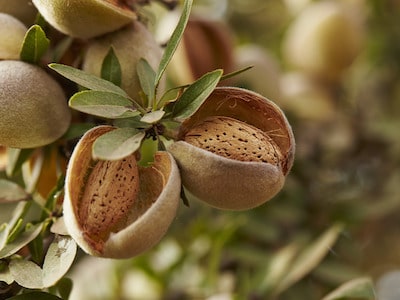
If you’re eating almonds today you can thank California growers as 80% of the world’s almonds come from California. Almonds are grown in seven other countries such as Spain, Italy and Australia but the contributions are small compared to California. Almonds are the number one agricultural export for the state and its second largest crop. How big is the market? For 2020-2021, the global almond production was forecast to be 15% higher to 1.7 million metric tons shelled basis, while global consumption was expected to rise to an all-time high of 1.5 million tons.2
How did America become the almond capital? From early times and their origin, almonds were considered a staple food as they helped sustain the nomadic tribes’ long journeys in central and southwest Asia. It wasn’t until 1840, that almonds were introduced in the Unites States with little success. Originally, the trees were introduced in the south and southwest — places like Georgia, Texas and New Mexico — since the genetic makeup of almonds are similar to peaches. However, it was quickly discovered that peaches and almonds don’t survive in the same climate as early blooming almond trees usually succumbed to late frost or diseases related to the high humidity.3 By the 1850s, almond tree plantings near Sacramento, Monterey and Los Angeles started to show success as the Mediterranean-like climate of California was the answer. And then as they say “the rest is history.”

Here’s a recipe for “3-Ingredient Chocolate Almond Bark with Cherries” to get you started.
References:
1. “A ‘Munch’ Needed Distraction,” The Hartman Group, January 19, 2021
Report: “Snacking 2020: Emerging, Evolving and Disrupted”
2. “Tree Nuts: World Markets and Trade,” USDA, October 2020
3. National Almond Day: History of Almonds
Note: Even though I’ve spoken or attended educational events on behalf of the Almond Board in years past, I have no current financial relationship. I just like almonds.
